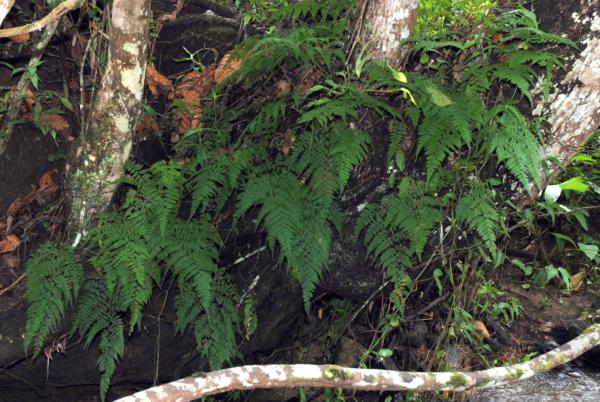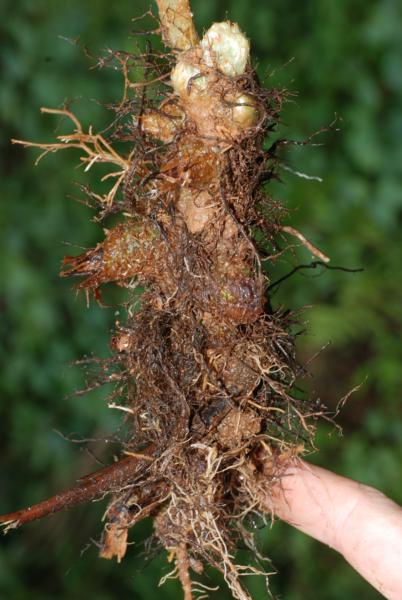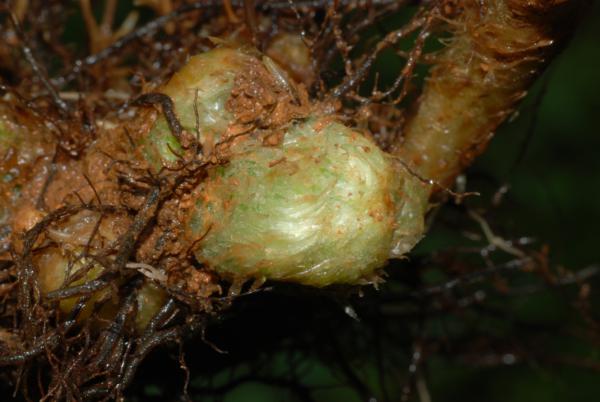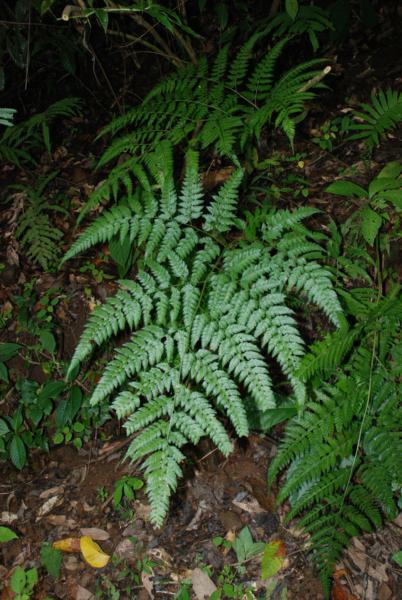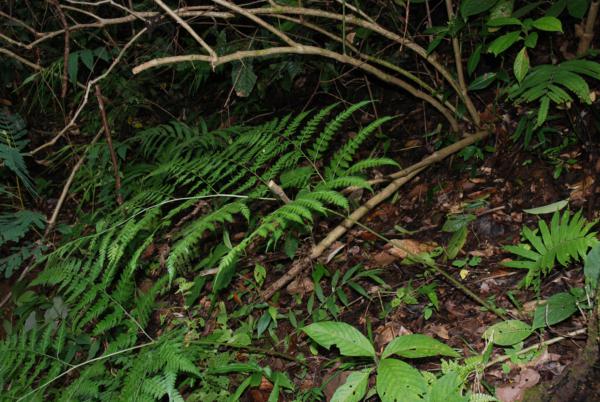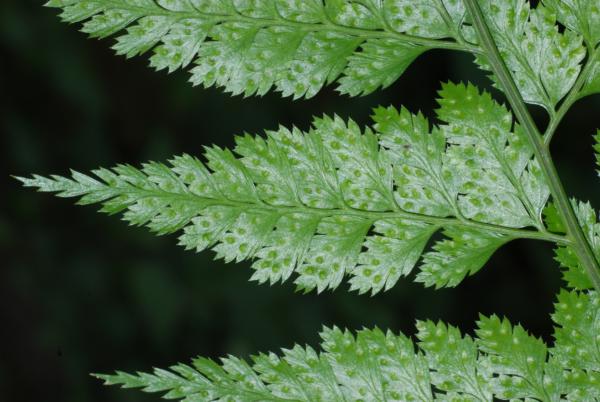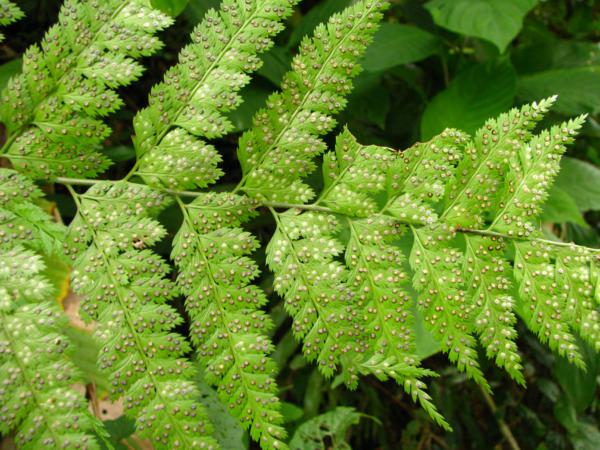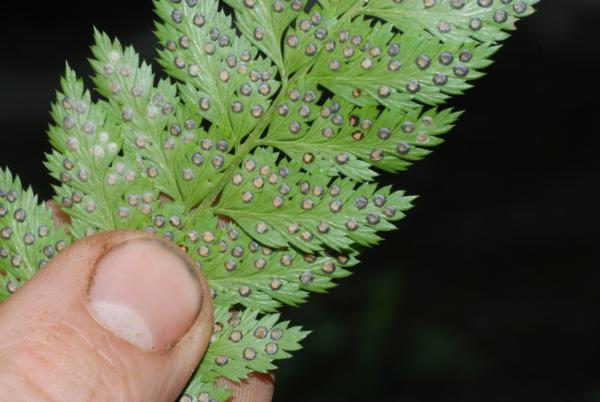
Arachniodes henryi (Christ) Ching
Family
Dryopteridaceae
Nomenclature
Arachniodes henryi (Christ) Ching, Acta Bot. Sin. 10: 258. 1962; Tagawa & K.Iwats., Acta Phytotax. Geobot. 26: 58. 1974; Tagawa & K.Iwats., Fl. Thailand 3: 342, f. 30.7-8. 1988; Boonkerd & Pollawatn, Pterid. Thailand: 199. 2000. – Polystichum henryi Christ in Lee., Notul. Syst. 1: 36. 1909. – Dryopteris henryi C.Chr., Contr. U.S. Natl. Herb. 26. 282. 1931. – Rumohra henryi (Christ) Ching, Sinensia 5: 57, t. 10. 1934. – Byrsopteris henryi (Christ) Morton, Amer. Fern J. 50: 154. 1960. – Type: Henry 13351 (Isotype in K), China, Yunnan.
Rumohra simulans Ching, Sinensia 5: 54, pl. 8. 1934; Tardieu & C.Chr., Fl. Indo-Chine 7(2): 326. 1941; Holttum, Dansk Bot. Ark. 20: 31. 1961. – Arachniodes simulans (Ching) Ching, Acta Bot. Sin. 10: 259. 1962; Tagawa & K.Iwats., SouthE. Asian Stud. 5: 93. 1967. – Type: Fang 2742, China, Sichuan.
Description
Terrestrial. Rhizome creeping, up to 8 mm diam., scales dense, linear-subtriangular, up to 7 by 1.5 mm, brown. Stipes stramineous, scaly at base, very sparsely, minutely scaly upwards, up to 50(–75) cm long. Laminae oblong to pentagonal, with caudate-acuminate apex, 4–5-pinnate, up to 83 by 75 cm; rachis glabrescent, grooved; pinnae anadromous, about 10 pairs, the lowest the largest, with large, basal, acroscopic pinnule, middle ones oblong-subtriangular, widest at distinctly stalked base, gradually narrowing towards acuminate apex, up to 38 by 13.5 cm, upper pinnae rather suddenly reduced to form apical part of frond, pinnules oblong-subdeltoid, acute at apex, unequally cuneate at base, stalked, 4–10 by up to 4 cm; secondary pinnules oblong-subdeltoid, moderately acute at apex, unequally cuneate at base, pinnatisect to pinnate, segments oblong, oblique, sessile, serrate at margin, lobed in larger ones; papyraceous, green, glabrous on both surfaces or sparsely hairy on veins underneath. Sori round, terminal or more rarely dorsal on veinlets, medial or close to margin, raised on upper surface; indusia round-reniform, glabrous .
Distribution in Thailand
NORTHERN: Mae Hong Son, Chiang Mai, Chiang Rai, Lamphun, Lampang.
Wider Distribution
SW China (Szechuan, Yunnan, Hupeh), Upper Burma and N Vietnam.
Ecology
On mountain slopes usually in dense evergreen forests at 800-1400 m alt.
Proposed IUCN Conservation Assessment
Least Concern (LC). This species is widespread and not under any known threats.
Voucher specimens - Thailand
Middleton et al. 4963, Mae Hong Son, Ban Hua Ha (E).
Habit
Rhizome
Apex of rhizome
Frond
Frond from the side
Upper surface of frond showing the position of the sori beneath
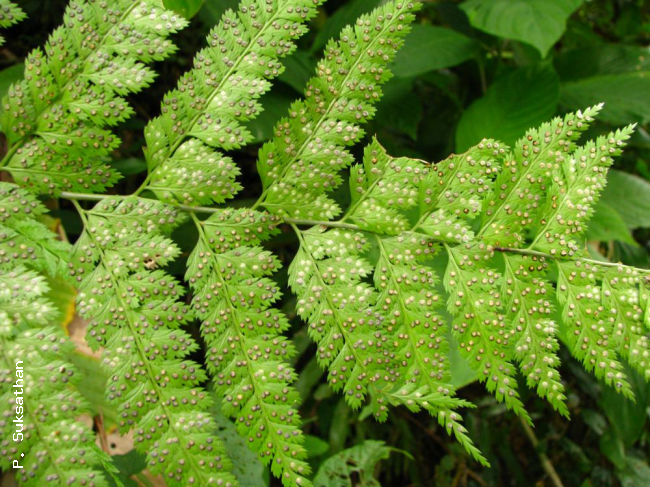
Lower surface of frond
Lower surface of frond and sori
Site hosted by the Royal Botanic Garden Edinburgh. Content managed by Stuart Lindsay, Gardens by the Bay, Singapore and David Middleton, Singapore Botanic Gardens. Last updated 24 January 2012
